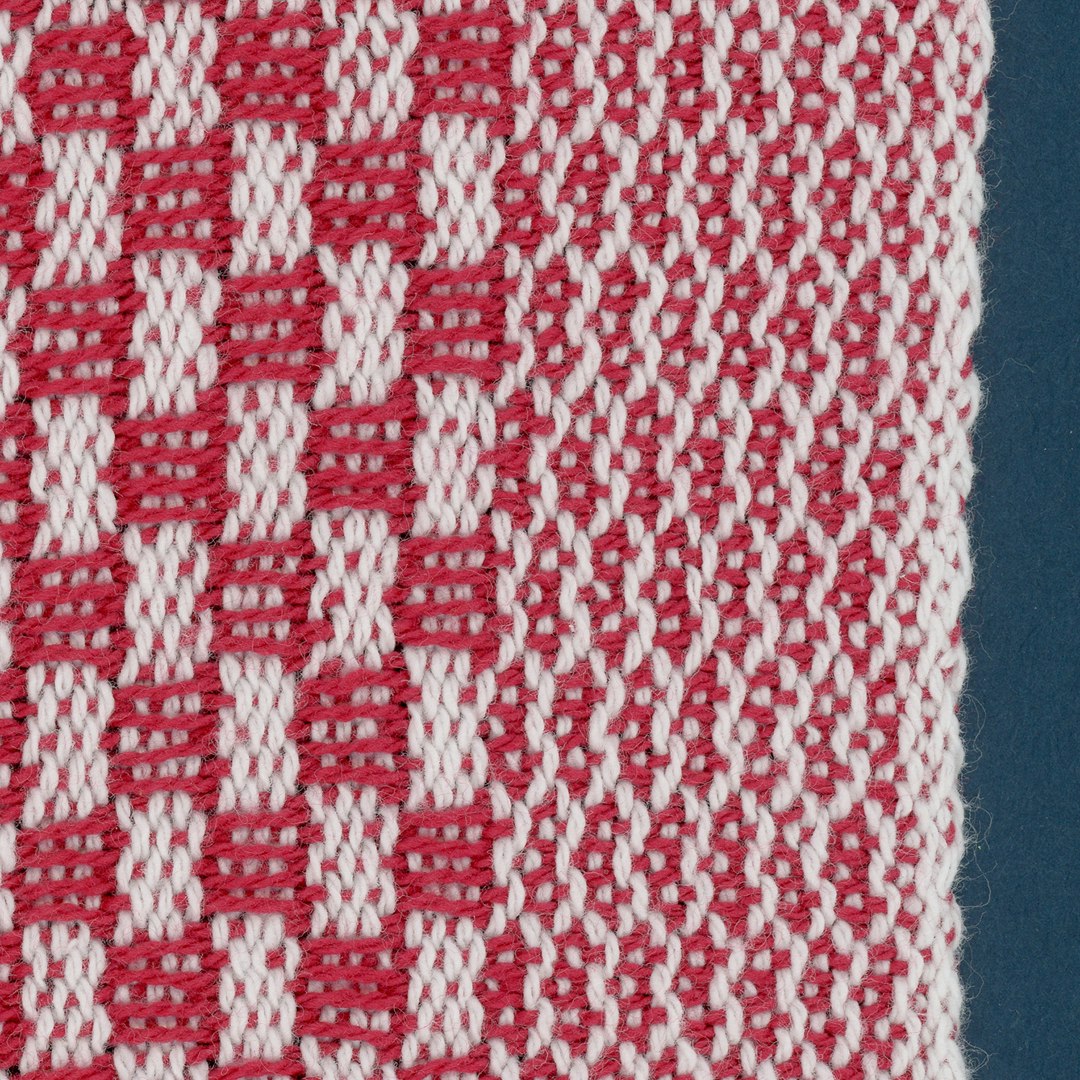Madelyn,
I just finished weaving a set of towels based on the Keep It Simple Towels from the Summer 1985 issue of Handwoven. The original pattern called for sleying 3 ends per dent in the last 2 dents on either side. The pattern I used called for 4 per dent in the last dent only.
I did this in lieu of using a floating selvedge and was really happy with the result. The selvedges were good and I didn’t have to fuss with a floating selvedge.
I have been weaving only a couple of years, but I have never seen this technique before, and I would like to do this more often. My question is this: When can, or should, this be used, and are there any drawbacks?
Thanks for your help!
—Jack

A close-up on the selvedges of the Keep it Simple Towels. Photo by Madelyn van der Hoogt
Hi Jack!
Floating selvedges are recommended when the same warp thread (or warp threads) at the selvedge are raised or lowered for two picks or more in a row. Without a floating selvedge, the weft would turn inside the edge of the cloth. With a floating selvedge in place, the weft always exits under it and enters over it (or vice versa), therefore turning around the last thread on each side.
Floating selvedges are not required when the threads on the edges weave plain weave or when twill treadling orders can be derived so that the weft always passes under/over the last thread on each side. In the Keep It Simple towels, the weft does not always turn around the edge thread. The closer sleying draws the edge threads closer together, minimizing the effect of the warp floats. I think it works for this project (and creates a firm edge), but it probably wouldn’t work for twills or for supplementary pattern wefts. For those, floating selvedges are almost always recommended.
You can see how the warp threads are compressed in the selvedges of the Keep It Simple towels. The absence of red at the selvedges is evidence that the weft did not weave to the edge in every pick. (This towel is woven by Jane Patrick.)
—Madelyn

